Integrating Lab Work and Nutritional Counseling in Hybrid Healthcare

Understanding the Value of Integration in Hybrid Healthcare Models
The evolving landscape of healthcare emphasizes a shift towards comprehensive, patient-centered models that seamlessly combine diagnostics and nutritional services. This integration aims to enhance patient outcomes, improve healthcare efficiency, and foster collaborative, multidisciplinary approaches. As technology advances and interprofessional training expands, understanding how to effectively merge lab work with nutritional counseling is crucial for delivering holistic care.
The Scientific Basis for Integrating Lab Testing and Nutritional Counseling
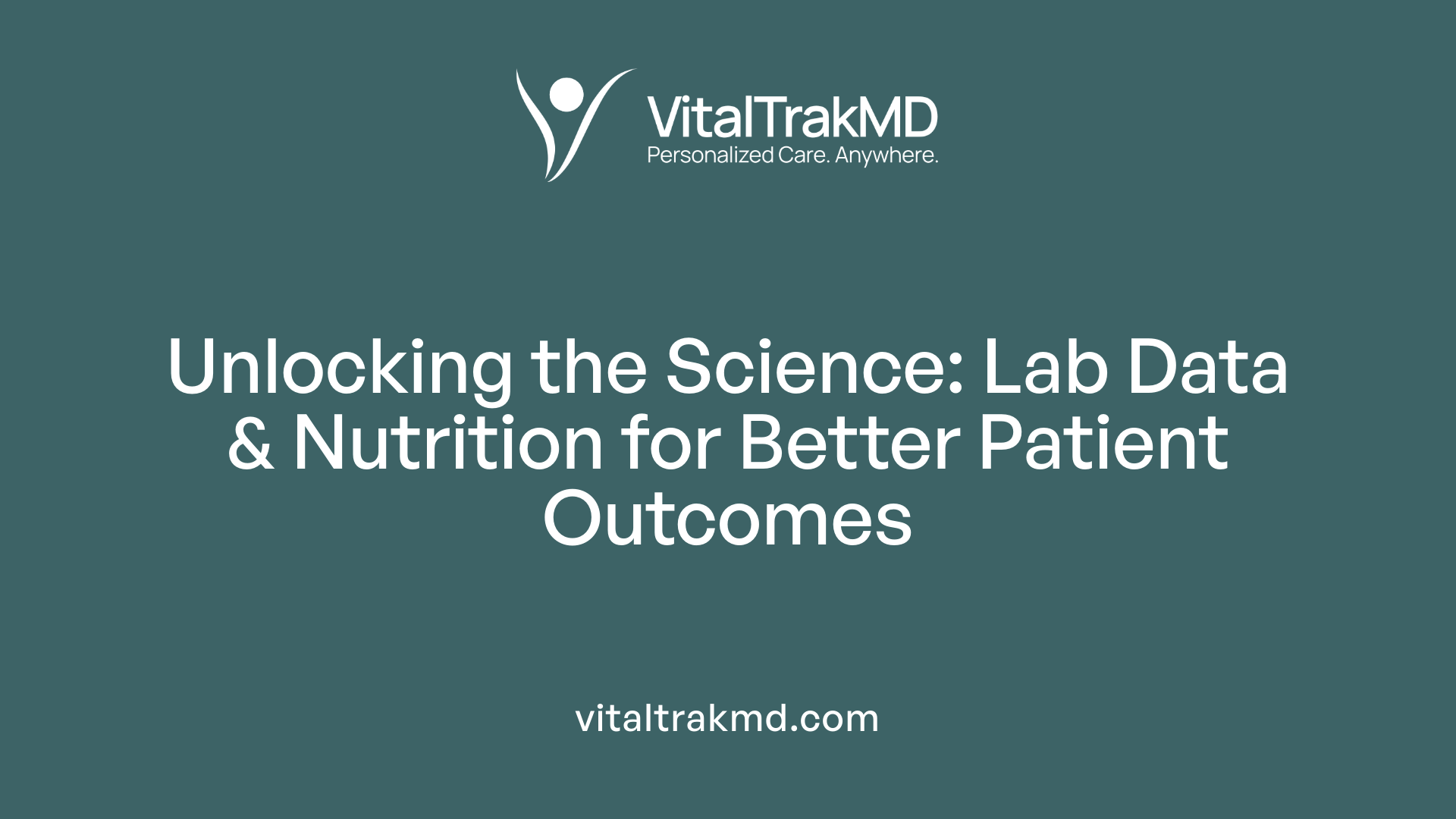
How does integrating laboratory diagnostics and nutrition counseling impact patient health outcomes and healthcare system efficiency?
The combination of lab testing with nutritional counseling creates a powerful tool for personalized healthcare. By utilizing laboratory data, healthcare providers can identify specific nutrient deficiencies, imbalances, and metabolic patterns that are not easily visible through ordinary assessments like food journals and symptom tracking.
This integration allows clinicians to tailor nutrition plans precisely to each individual's needs. For example, advanced tests—such as micronutrient analysis, gut health assessments, and hormonal evaluations—provide detailed insights into underlying health issues.
When laboratory diagnostics are incorporated into nutritional strategies, patient outcomes improve significantly. Early detection of deficiencies enables timely interventions, reducing the risk of complications such as malnutrition or metabolic disturbances. This proactive approach can result in faster recovery times, improved immune function, and overall better health status.
Moreover, integrating lab results enhances the efficiency of the healthcare system. It reduces unnecessary treatments and hospital readmissions by addressing root causes early. Data-driven, personalized plans often lead to more effective and sustainable health improvements.
Research shows that accessing comprehensive lab data supports collaborative, interdisciplinary care, ensuring all aspects of a patient's health are considered. By aligning nutritional therapy with clinical findings, providers can improve treatment adherence and satisfaction.
In summary, combining lab diagnostics with nutrition counseling transforms traditional care into a precise, individualized process—leading to better health outcomes and more cost-effective healthcare delivery.
Harnessing Data: Digital Platforms and AI in Diagnostic and Nutritional Integration
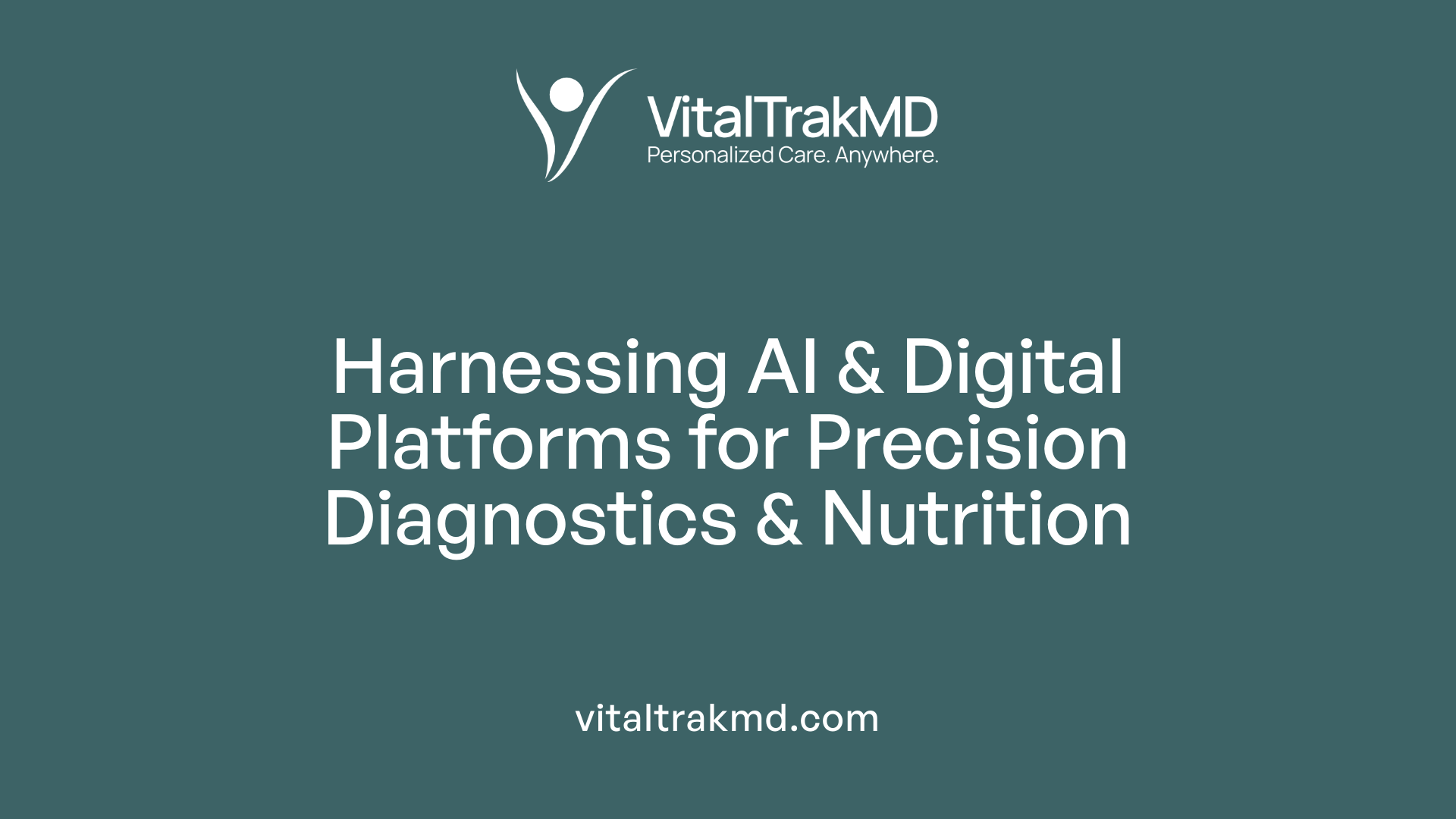
How can digital health tools and AI solutions support the integration of laboratory work and nutritional counseling?
Digital health technologies and artificial intelligence (AI) are transforming healthcare by enabling more integrated, personalized, and efficient patient care. In the context of laboratory diagnostics and nutrition counseling, these tools provide vital support for combining complex data streams to better understand individual health needs.
One major advantage is the ability to share and analyze data seamlessly across healthcare disciplines. Cloud-based platforms allow health professionals to access lab results, nutritional data, and patient information from multiple sources in real time. AI systems can interpret laboratory results—such as nutrient levels, metabolic patterns, and biomarkers—and translate these into personalized dietary recommendations.
Wearable devices, smart scales, and ambient sensors contribute to continuous monitoring of physiological and behavioral parameters. These real-time data streams enable clinicians to track progress actively, adjust treatment plans swiftly, and identify emerging issues before they become critical. For example, AI algorithms can analyze trends in blood glucose, micronutrient levels, and activity patterns, creating an integrated picture of the patient’s health.
This interconnected approach not only enhances diagnostic accuracy but also promotes tailored nutrition strategies. AI-driven virtual health assistants and decision support tools help healthcare providers craft specific intervention plans based on comprehensive data. Moreover, automated alerts can flag deviations—like deficiencies or abnormal vital signs—prompting proactive intervention.
Ultimately, digital health platforms and AI facilitate a patient-centered model of care. They bridge gaps between laboratory findings and nutritional guidance, ensuring interventions are based on precise, holistic insights. This synergy improves health outcomes, supports complex clinical decision-making, and fosters a more effective, connected healthcare system.
| Technology/Tool | Function | Benefits |
|---|---|---|
| Cloud platforms | Data storage & sharing | Seamless integration of lab and nutritional data |
| AI interpretation algorithms | Analyze lab results & patterns | Personalized recommendations |
| Wearables & sensors | Continuous real-time monitoring | Dynamic tracking of physiological and behavioral health |
| Virtual health assistants | Patient engagement & guidance | Immediate, tailored feedback |
| Alert systems | Flag deviations & critical changes | Proactive clinical response |
By harnessing these advanced digital capabilities, healthcare providers can develop more connected and effective approaches to diagnostics and nutrition, ultimately enhancing patient care and health outcomes.
Frameworks and Models Supporting Integration in Healthcare Delivery
Which frameworks or models are available for combining diagnostic testing with nutrition services in healthcare delivery?
Integrating diagnostic testing with nutrition services is essential for personalized and effective healthcare. Several frameworks and models facilitate this integration.
One prominent approach is the use of care pathways. These structured plans coordinate diagnostic assessments—such as metabolic panels, micronutrient testing, and gut health analysis—with targeted nutritional interventions. They help ensure that each step in diagnosis and treatment is connected, leading to better patient outcomes.
Another model is the collaborative practice framework. This emphasizes teamwork among various health professionals, including physicians, dietitians, lab specialists, and other clinicians. By sharing diagnostic data, team members can develop personalized nutrition strategies based on objective lab results.
Technology plays a vital role too. Digital health platforms—such as mobile apps, electronic health records (EHRs), and AI-powered decision support tools—allow continuous data collection from diagnostic tests. These systems facilitate real-time risk assessments, monitor biomarkers, and guide nutritional recommendations automatically.
Innovative concepts like food as medicine integrate diagnostic insights. For example, using lab data to prescribe specific nutrients, medically tailored meals, or grocery prescriptions helps address individual deficiencies and health conditions.
These models collectively support a comprehensive, patient-centered approach that combines diagnostic testing and nutrition services seamlessly, fostering better health management and disease prevention.
Educational Strategies for Interprofessional Training in Nutrition and Diagnostics
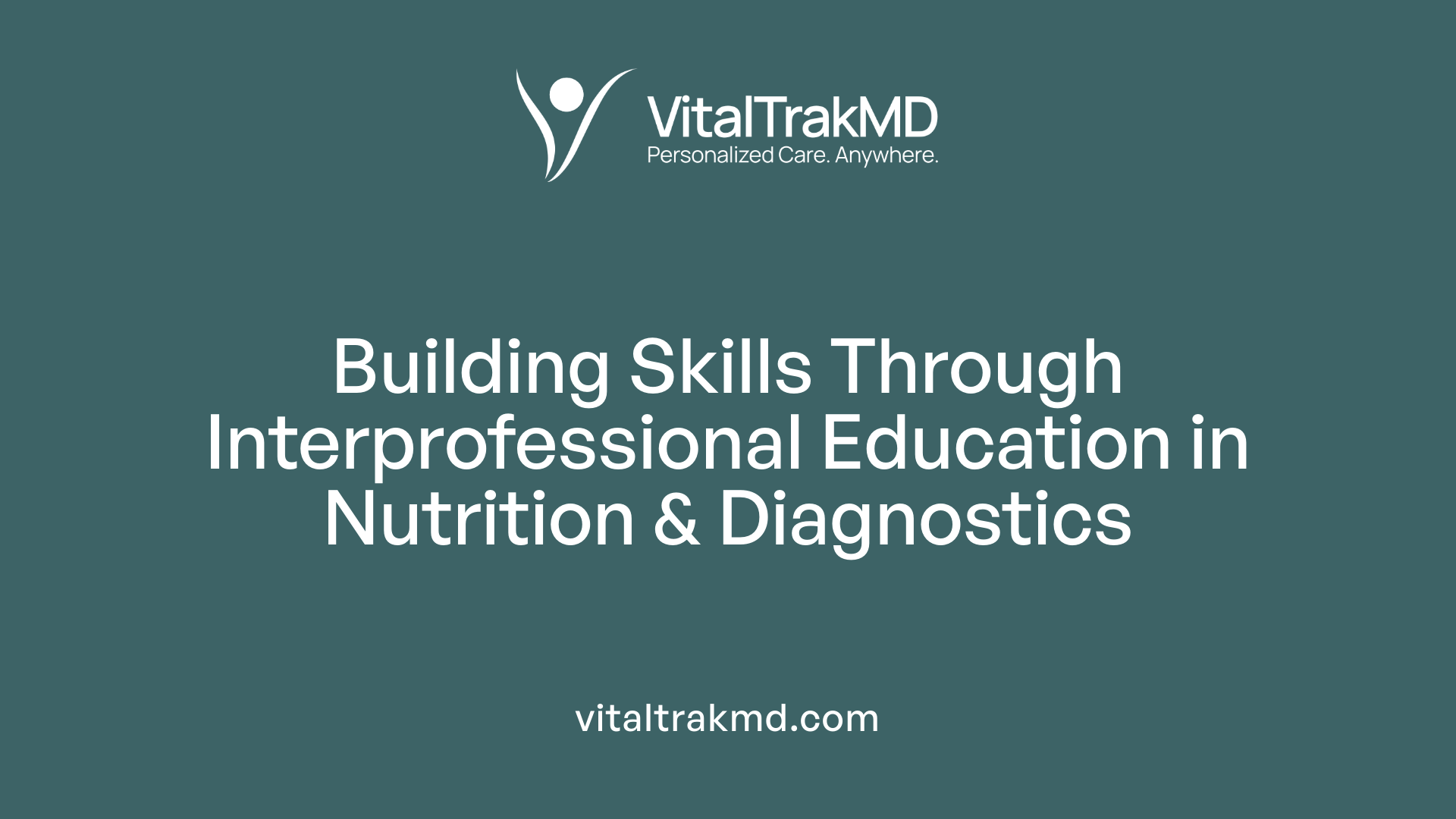
What educational and training approaches are effective for incorporating lab and nutrition services in hybrid healthcare settings?
Integrating lab testing and nutrition services effectively into hybrid healthcare practices requires innovative and collaborative training methods. One successful approach is the implementation of interdisciplinary training programs designed to promote team-based care. These programs encourage providers from various health disciplines—such as physicians, nurses, dietitians, and behavioral health specialists—to learn together, fostering a shared understanding of each other’s roles.
Case-based learning is a central component in these educational strategies. This method involves presenting real-world clinical scenarios that require the coordination of diagnostic testing and nutritional assessment. Such practical exercises help learners grasp how to interpret lab results, identify nutrient gaps, and develop personalized plans that address patient needs holistically.
Flexible learning modalities, including online modules, in-person workshops, and hybrid courses, enable diverse healthcare professionals to access training tailored to their schedules and learning styles. Continuous professional development courses ensure that providers stay updated on evolving technologies, new testing protocols, and integrated care workflows.
Moreover, fostering a culture of collaboration through joint training sessions enhances communication skills and teamwork. This environment helps overcome traditional silos, making way for more seamless delivery of comprehensive care involving lab diagnostics and nutrition counseling.
In summary, combining case-based exercises, interdisciplinary team training, and flexible educational formats equips healthcare teams with the skills necessary for effective, integrated care. These strategies not only improve provider confidence and competence but also translate into better patient outcomes by ensuring that diagnostics and nutrition services are seamlessly incorporated into routine healthcare practices.
Promoting Collaboration: Strategies and Frameworks
How can team-based approaches and role clarification enhance collaboration?
Implementing team-based approaches in healthcare involves clearly defining the roles and responsibilities of each team member. In nutritional and diagnostic teams, overlapping expertise can sometimes lead to confusion or gaps in care. By establishing explicit role clarification, team members understand their own scope of practice and how they contribute to the overall patient care plan. Structured approaches like multidisciplinary rounds encourage open communication and shared understanding, ensuring everyone is aligned.
Why is regular interdisciplinary communication vital?
Consistent communication across disciplines—such as lab technicians, physicians, dietitians, and behavioral therapists—is essential for coordinated care. Regular interdisciplinary meetings and digital communication tools enable timely sharing of findings, interpretations, and adjustments to treatment strategies. This ongoing dialogue helps in early identification of issues, such as nutrient deficiencies or behavioral health needs, and supports prompt interventions.
How does stakeholder engagement and shared decision-making foster collaboration?
Engaging stakeholders, including patients, families, and healthcare providers, fosters a collaborative environment. Shared decision-making involves discussing options openly, respecting diverse expertise, and incorporating patient preferences. This process builds trust, enhances adherence to care plans, and ensures that strategies are personalized and practical.
What strategies can promote effective interprofessional collaboration between lab diagnostics and nutritional expertise?
Effective collaboration can be strengthened through structured frameworks that emphasize communication, role clarity, and shared objectives. Implementing multidisciplinary teams with defined goals helps align efforts. Regular joint training sessions improve understanding of each other's roles and foster trust.
Utilizing hospital-specific collaborative models, like those developed at Sunnybrook Health Sciences Centre, provides a structured approach supported by stakeholder involvement and patient input. These models often incorporate tools such as multidisciplinary rounds, integrated care planning, and shared dashboards to facilitate coordination.
Standardized frameworks and a culture centered on mutual respect and ongoing learning are crucial. Such strategies lead to improved patient outcomes, increased system efficiency, and a more cohesive healthcare environment.
Implementing and Evaluating Integration in Hybrid Systems
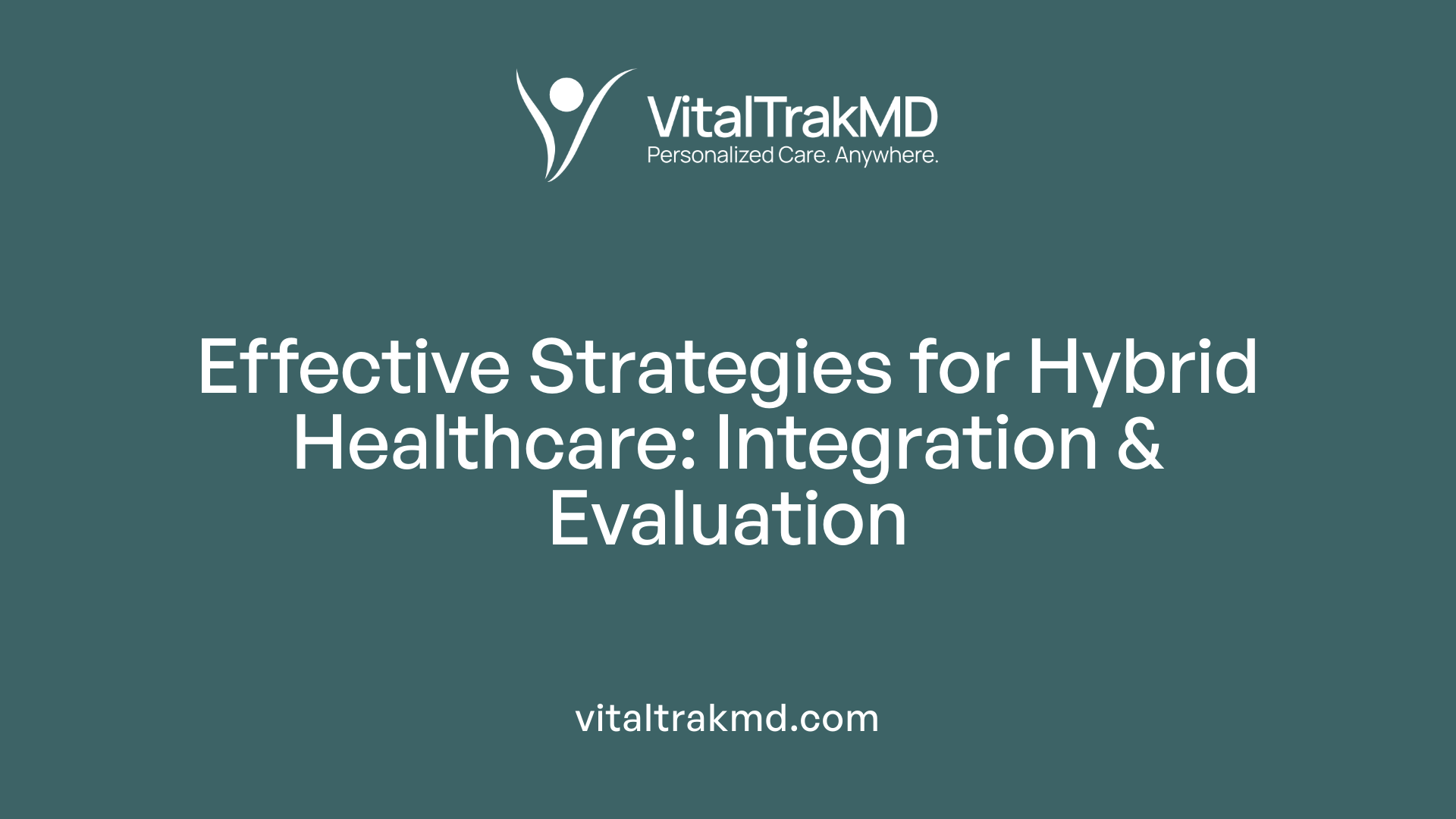
What methods and best practices are effective for integrating lab testing and nutritional counseling into hybrid healthcare models?
Successfully combining lab testing and nutritional guidance within hybrid healthcare settings involves setting clear collaboration protocols among healthcare professionals and utilizing advanced digital health systems. These systems enable smooth data sharing across various providers, ensuring that all relevant information—such as lab results and nutritional plans—is readily accessible.
A robust health information infrastructure is crucial. It facilitates timely communication, reduces errors, and supports coordinated care. At the same time, training healthcare teams in interdisciplinary and collaborative approaches fosters a shared understanding and enhances patient outcomes.
Leadership plays a vital role in addressing common barriers like limited funding, workforce constraints, and shortages of supplies and technology. Engaging community resources and incorporating telehealth services, such as remote monitoring devices and telemedicine platforms, can expand access and personalize care. An example is the Sheba Beyond system, which integrates real-time physiological and behavioral data to tailor interventions.
Implementing continuous improvement practices involves ongoing evaluation and adaptation. Using research frameworks that model complex systems allows healthcare providers to refine workflows, improve data interoperability, and measure the impact on outcomes like nutritional recovery, breastfeeding initiation, and chronic disease management.
In essence, blending innovative technology, strong interdisciplinary collaboration, and adaptive management strategies creates effective hybrid models that support comprehensive, patient-centered health care, ultimately leading to better health outcomes and system sustainability.
| Strategy | Implementation Details | Impact Focus |
|---|---|---|
| Digital health platforms | Seamless data sharing among providers | Timely interventions, coordinated care |
| Interdisciplinary training | Team-based approaches, role clarity | Improved provider collaboration, patient engagement |
| Telehealth and remote monitoring | Wearable devices, virtual consultations | Increased access, personalized treatment |
| Systems-based evaluation | Adaptive frameworks, ongoing research | Continuous quality improvement, scalability |
This integrated approach ensures that complex care needs are met efficiently, leveraging technology and teamwork to optimize health outcomes.
Innovations in Post-Surgical and Maternal-Child Nutrition Management
How are post-bariatric surgery monitoring systems enhancing patient care?
Recent advancements in digital health, such as the NutriMonitCare system, represent significant progress in post-surgical nutrition monitoring. This innovative platform collects real-time data from certified smart devices including scales, sleep analyzers, blood pressure monitors, and activity trackers. It provides continuous assessments of parameters like body composition, sleep quality, cardiovascular health, and biochemical markers such as blood glucose and micronutrients.
This system not only gathers data but also incorporates clinical thresholds to flag issues such as micronutrient deficiencies or weight plateaus. Alerts prompt timely interventions, supporting proactive management of patient health. Its modular, secure, cloud-based architecture enables integration with electronic health records, combining long-term, personalized care with multidisciplinary coordination. Though currently in prototype, systems like NutriMonitCare aim to improve recovery outcomes after bariatric surgery by guiding adjustments based on comprehensive, real-time insights.
What strategies are effective for integrating maternal and child nutrition into healthcare services?
Effective integration of maternal and child nutrition involves addressing structural components within health systems. The World Health Organization highlights six building blocks—financing, health information systems, workforce, supplies, governance, and service delivery—that must be strengthened to ensure success.
Practical approaches include expanding early breastfeeding initiation, supporting exclusive breastfeeding, and ensuring vitamin A supplementation, which enhance recovery and development in children. Mixed methods research indicates that overcoming barriers such as resource limitations and workforce shortages is crucial.
Implementing a holistic approach also requires training providers in nutrition-specific competencies and establishing clear protocols for routine screening and counseling. Building strong leadership and ensuring adequate supply chains foster consistent quality and coverage. Larger-scale implementation depends on continuous evaluation to adapt strategies effectively.
How does integrating care improve recovery and developmental outcomes?
Integrating sophisticated monitoring systems post-surgery and embedding nutrition services within maternal and child health programs improve overall health outcomes. For example, comprehensive data from platforms like NutriMonitCare facilitate early detection of nutritional deficiencies, enabling prompt treatment.
Similarly, effectively embedding nutrition initiatives in maternal and pediatric care supports optimal growth, reduces malnutrition, and enhances recovery from illness or surgery. Better coordination among health sectors ensures that interventions are timely, targeted, and sustainable.
By bridging technology, policy, and practice, interdisciplinary efforts foster environments where personalized, continuous care is accessible. This integration strengthens the foundation for healthier communities, supporting lifelong wellness and resilience.
| Aspect | Focus | Details |
|---|---|---|
| Post-surgical monitoring | Technological integration | Use of smart devices, real-time alerts, secure data storage |
| Maternal-child services | Policy and system strengthening | Training, supply chain, care protocols |
| Impact | Outcomes | Faster recovery, improved growth, reduced malnutrition |
| Implementation | Challenges and solutions | Workforce training, infrastructure, continuous evaluation |
This evolving landscape underscores the importance of innovative, integrated approaches that holistically support both surgical recovery and maternal-child health, ultimately fostering healthier generations.
Addressing Barriers and Ensuring Sustainable Implementation
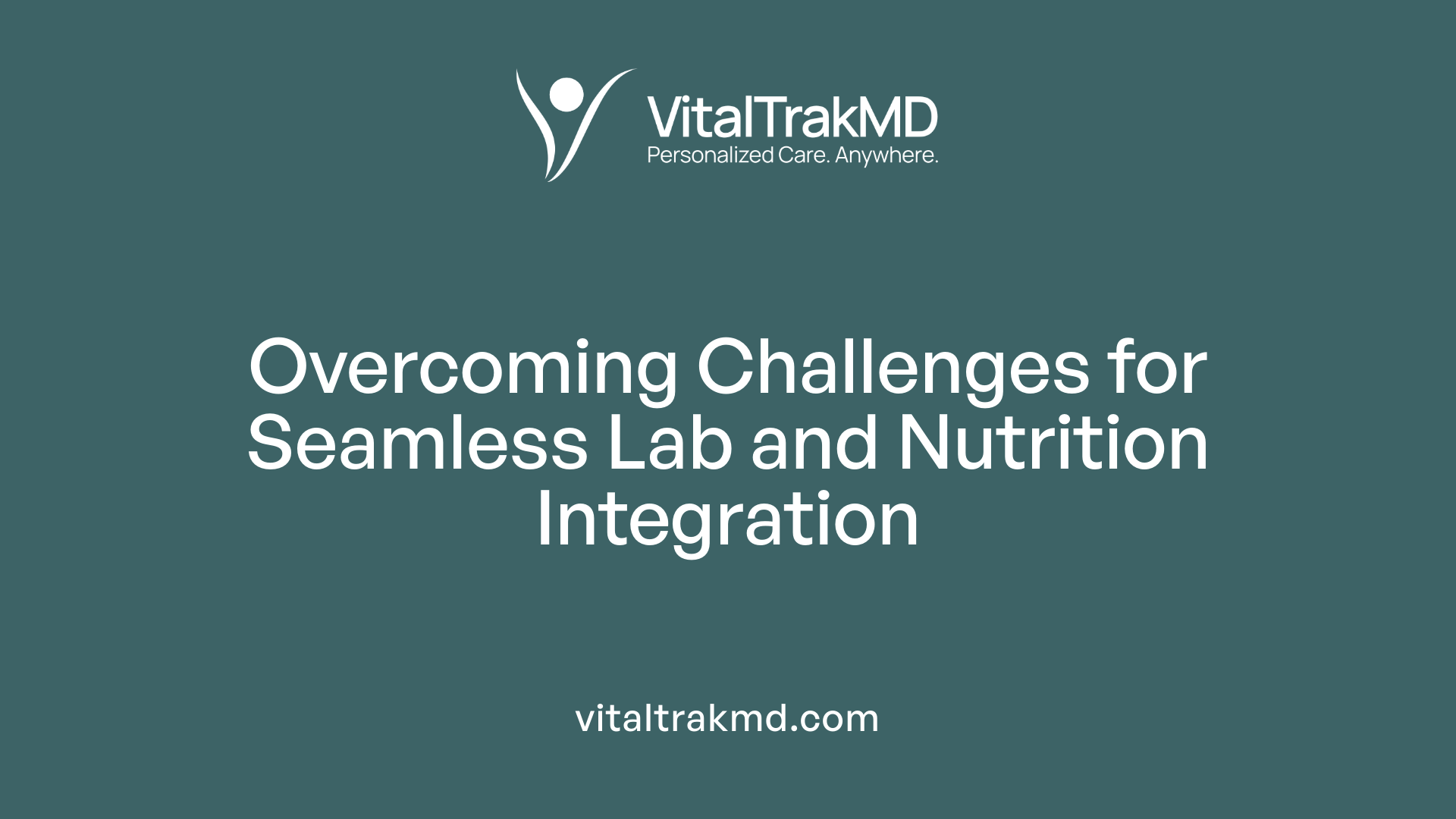
What challenges, barriers, and solutions exist in implementing combined lab and nutrition services in hybrid health systems?
The integration of lab testing and nutrition services within healthcare systems presents several hurdles that can slow down or hinder effective delivery. Common barriers include a lack of necessary resources, such as functional anthropometric equipment vital for nutritional assessments. High provider caseloads often limit the time available for comprehensive patient evaluations, reducing the effectiveness of integrated care.
Additionally, inadequate staff training and low motivation among healthcare workers can compromise the quality of service delivery. Organizational issues—like weak leadership, poor supervision, and fragmented data management systems—further complicate coordination among multidisciplinary teams.
Systemic challenges such as frequent health post closures and a lack of prioritization for nutrition programs diminish opportunities for service integration. Provider misconceptions about food prescription interventions, insufficient screening tools, and limited knowledge in interpreting lab results can also act as obstacles.
To overcome these challenges, several solutions can be implemented. Strengthening leadership engagement ensures better oversight and resource allocation. Investing in ongoing training programs and functional equipment improves provider competency. Developing clear, integrated protocols streamlines workflows and improves consistency.
Improving data interoperability allows for better tracking of patient progress and facilitates multidisciplinary collaboration. Cultivating a culture of teamwork, considering local contexts, and creating dedicated spaces within health facilities—such as areas for growth monitoring and nutrition counseling—can significantly enhance integration and sustainability. Overall, addressing these barriers through strategic planning and resource investment is essential for building resilient, effective health services that combine laboratory and nutritional care.
The Future of Integrated Healthcare: Opportunities and Continuing Challenges
The integration of laboratory diagnostics and nutritional counseling within hybrid healthcare models symbolizes a transformative step toward holistic, patient-centered care. While technological advancements and educational initiatives are paving the way for more seamless collaboration, challenges such as resource limitations, systemic barriers, and the need for scalable frameworks remain. Future efforts should focus on developing interoperable systems, fostering interprofessional education, and applying implementation science principles to optimize these integrations for better health outcomes. Embracing innovation, policy support, and community engagement will be vital in overcoming current hurdles and realizing the full potential of integrated diagnostics and nutrition in healthcare.
References
- Lab Testing for Nutritional Counseling
- Integrated Medical and Digital Approaches to Enhance ...
- Integrating nutrition services into health care systems ...
- Integrating nutrition and culinary medicine into preclinical ...
- Challenges and opportunities for nutrition education ...
- Behavioral Health Integration Into Primary Care - AMA Ed Hub
- Barriers and facilitators to the implementation of nutrition ...
- An exploration of key barriers to healthcare providers' use ...
Recent articles
Want to Feel Better and Live Healthier?
Join hundreds of patients taking control of their health with personalized care that fits their life – not the other way around.
Rated 4.8/5 by 32+ customers







